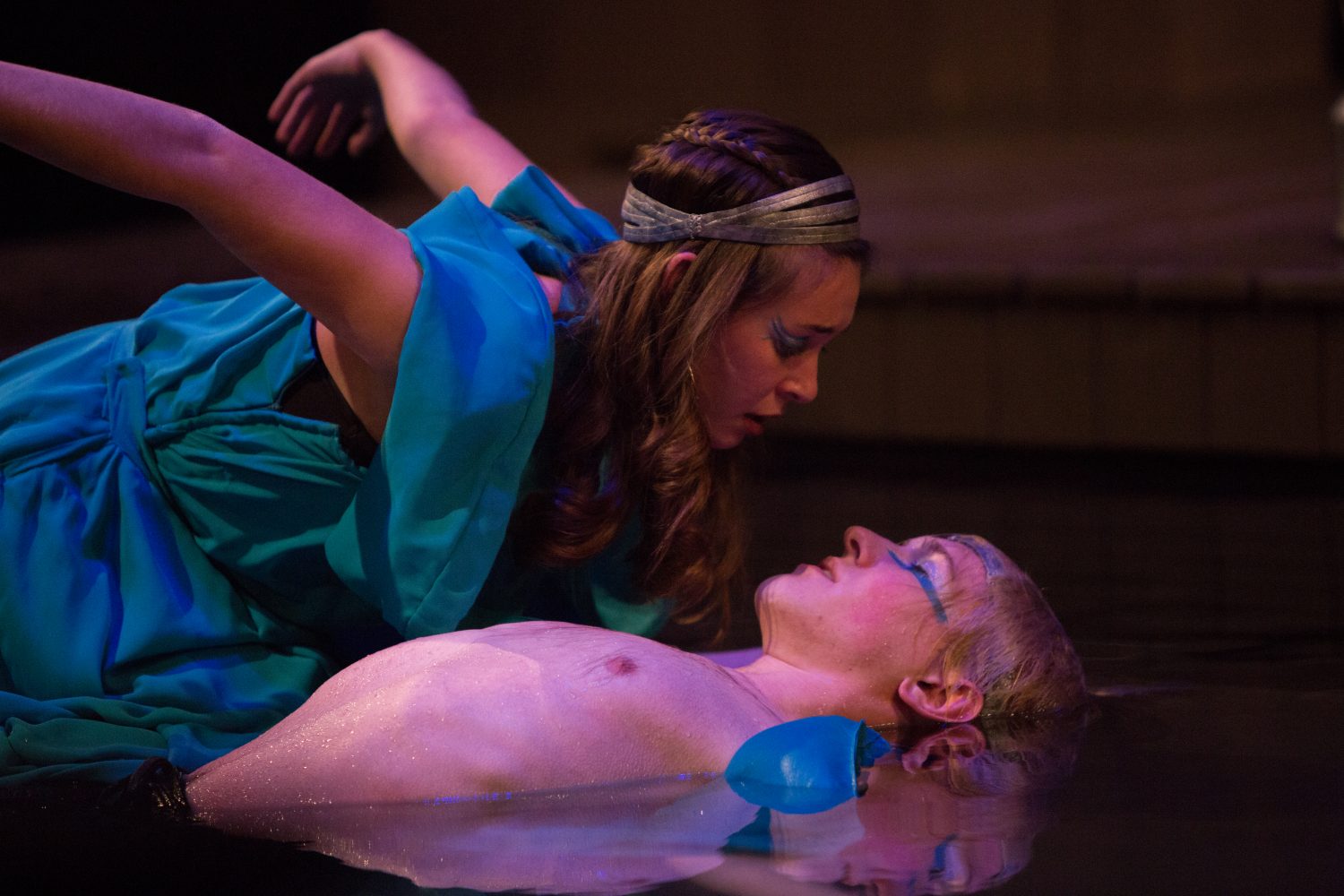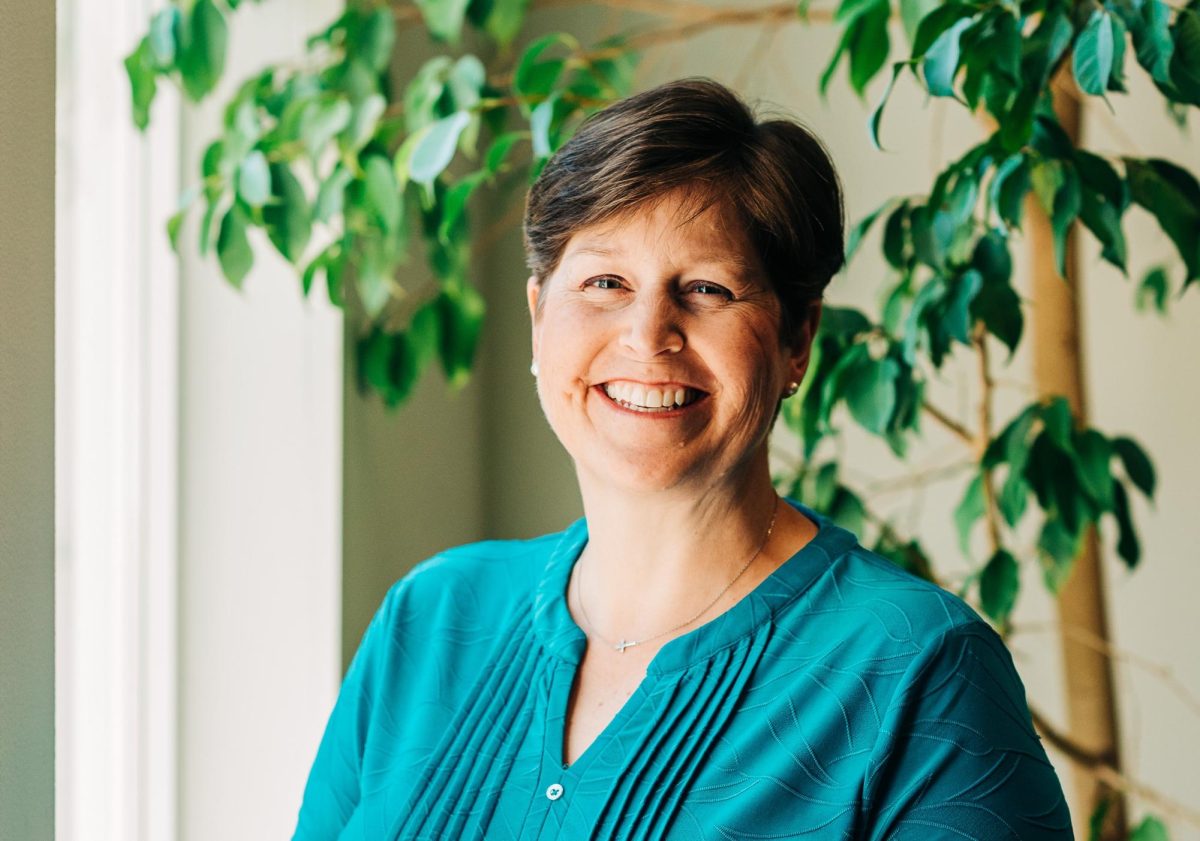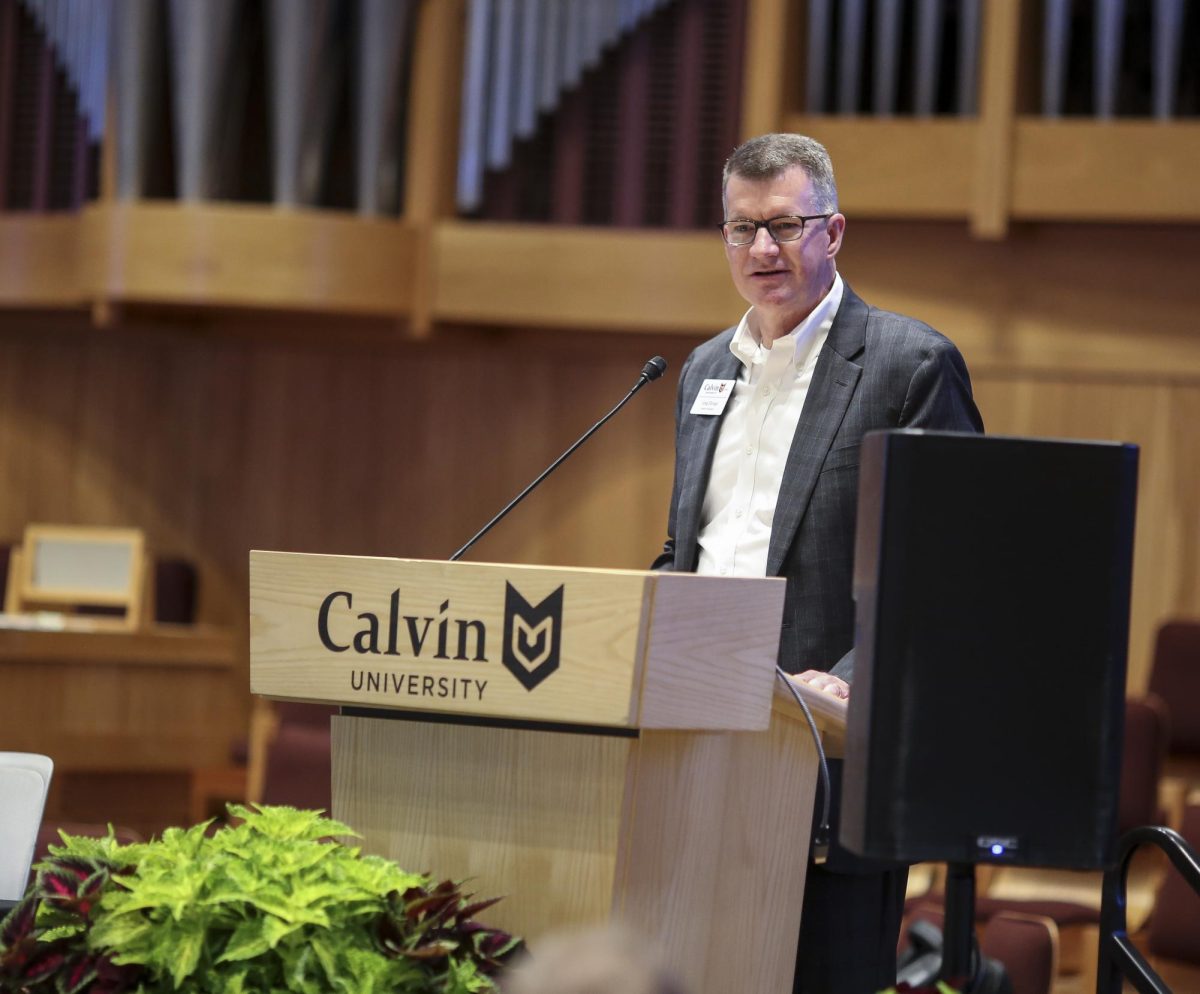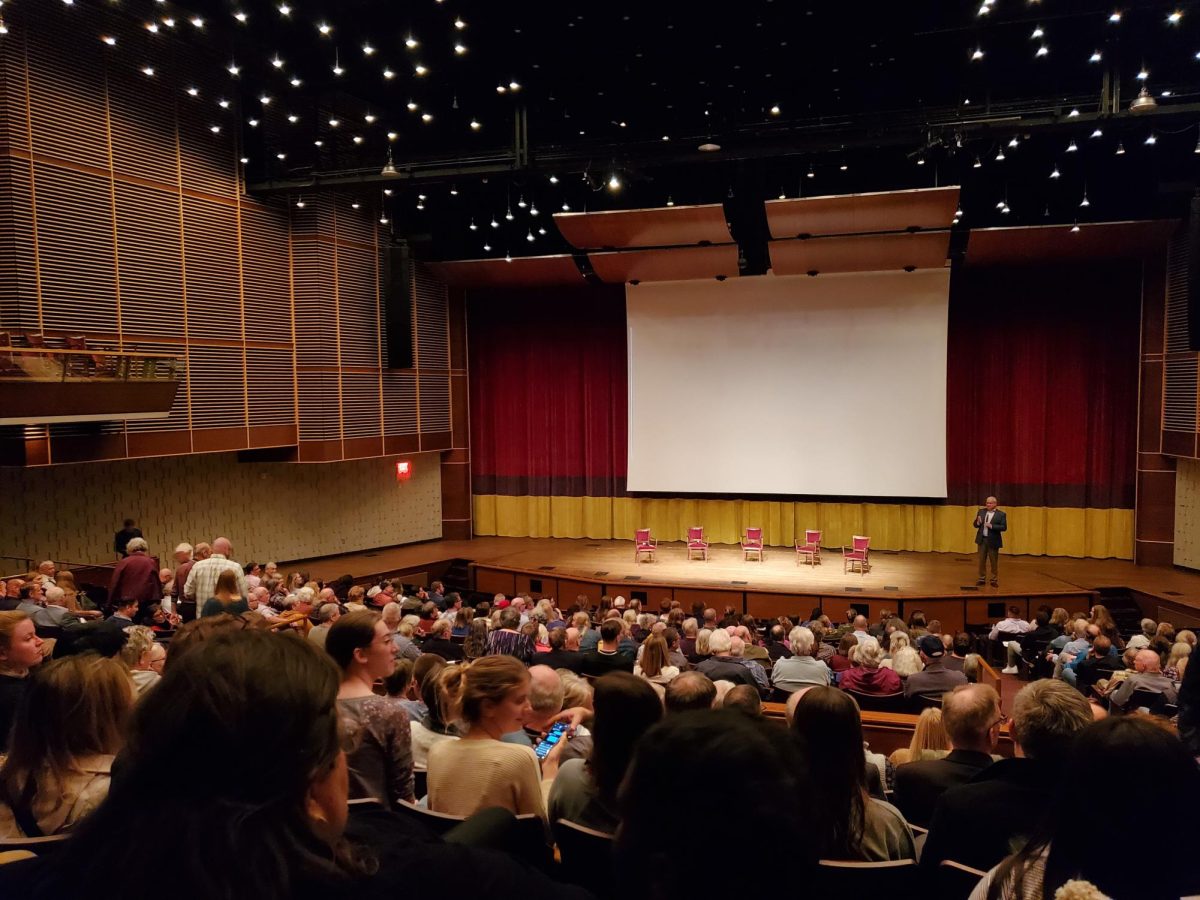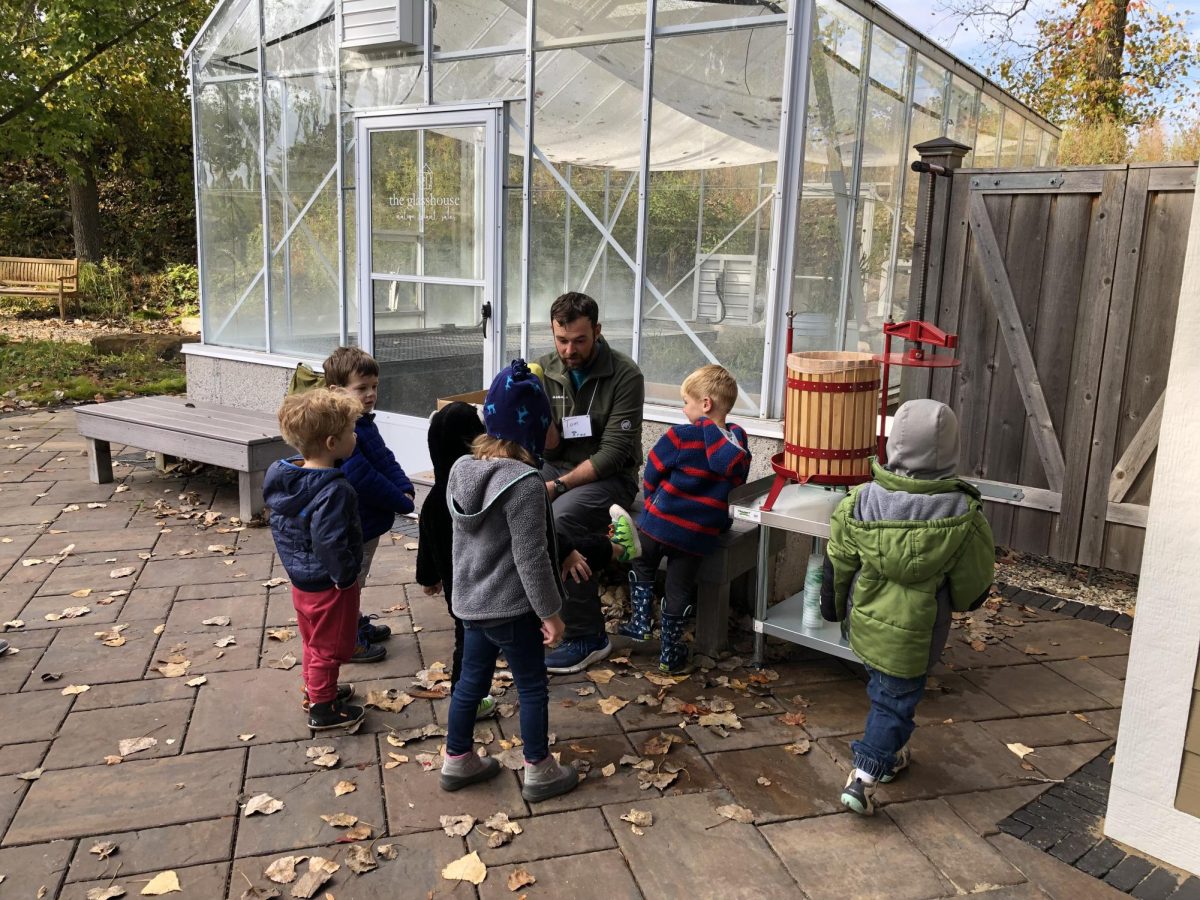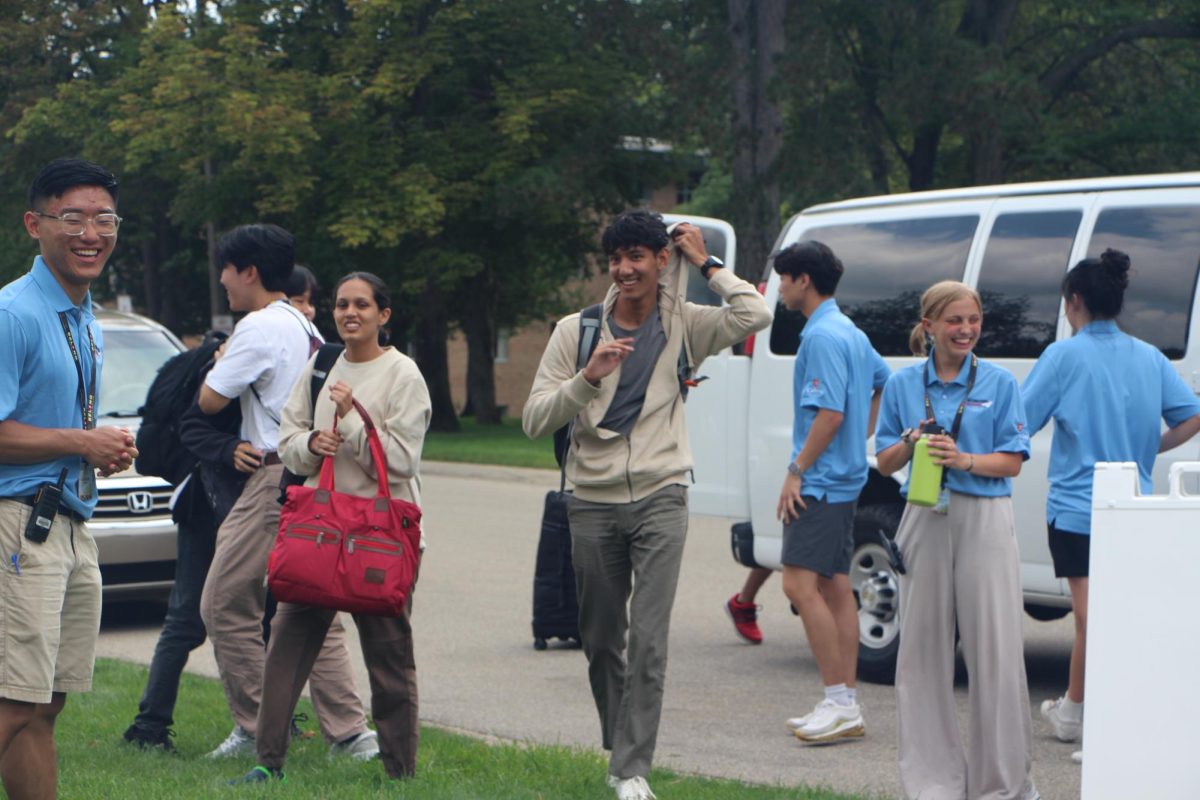A Calvin Theatre Company Production from Start to Finish as Seen Through “Metamorphoses”
Whether sitting in a dimmed high school auditorium or seated front row at a Broadway production, the experience of watching a theatrical performance is something many people can relate to. Performances can be exciting — actors telling a story or exploring a concept with the capacity to stir emotions and thought — a dynamic form of entertainment. However, in order to reach that potential of power, an inspiration must become a reality. The production of a show comes through an intense process with many facets and is undertaken by the Calvin Theatre Company (CTC) each semester.
This semester, CTC is performing Mary Zimmerman’s “Metamorphoses,” a series of nine myths adapted from the work of Ovid. The myths, as the title implies, explore the idea of undergoing transformation. Mortals and gods alike experience falling in love, having a change of heart, and passing from life into death (and back again!). All of these transformations share the context of being based in water, which is “the transformative element,” according to director Stephanie Sandberg.
In order to accommodate the need for water, the company had to design and construct a pool with accompanying seating, a set which is now housed in the lab theater. This seemingly daunting feat was just one of the many tasks included in the production process. Most of the work, which began as early as last spring, has already been finished. The rest simply involves the CTC sharing the story with its audience — a story that began with an inspiration.
When discussing her choice to produce “Metamorphoses” at Calvin, Sandberg prefaced her reasoning by saying, “You should never choose to do any play, any play at all, unless you have a passion for it.” For Sandberg, this passion stemmed from her own previous viewing of the play. Sandberg said that, ultimately, her desire is that this play will bring hope and healing to those who see it, “that our shattered existences will be pieced together in the grace of meaning.”
Upon selecting a play and establishing a vision, the CTC faculty met last spring to discuss the lineup for the 2014-2015 theatrical season, concluding that “Metamorphoses” would be performed in the fall. From there, Sandberg began to collaborate with David Leugs, the technical director for the show and the current director of the theatre program. Leugs designed the layout of the pool, the surrounding deck and corresponding seating, drawing inspiration for the color schemes and general aesthetic from architectural designs and colors of our very own Grand Rapids.
The faculty also decided on designers for scenery, lighting, sound, costumes and props. Each started preliminary work during the summer, reading the script and looking for inspiration. Production meetings were held for the faculty to discuss the play and prepare for the coming fall season as a whole. David Leugs, designer of the scenery and lighting for “Metamorphoses,” had the job of taking the completed set designs and beginning construction. When students arrived in the fall, much of the groundwork for the show had already been laid, and it was time to start incorporating the students’ talents into the rest of the process.
Once work was underway on the set, casting became the next priority. As “Metamorphoses” is mythic by nature, the cast would be required to play characters who seem “larger than life” and embody emotions just as vast and powerful. Through auditions, Sandberg, supported by her stage manager, Cathy Fazio, and selected the 11 students who would tell the story. The cast is composed of six women and five men, and each actor is expected to play multiple roles in the series of myths. Additionally, the students were paired with trainers in the kinesiology department to learn to handle the physicality and movement of the characters.
With the actors chosen, it was time to determine who would work on the various crews. Annually, the CTC as a whole meets together for an afternoon retreat early in the fall semester with the purpose of welcoming new students who auditioned, introducing faculty and previous members, and discussing the fall show to begin crew assignments. Based on individual student preference and interest, crews were assigned, and production work was in full swing.
Costuming is this show’s real challenge, both in the pieces and the makeup that has to be able to withstand and function well in water. Aynsley Fuller, a junior working in the costume shop under the supervision of designer Amanda Ytzen, explained some of the unexpected challenges:
“When you add the extra variable of a pool, anything can happen. But it’s not really the water we’re worried about, it’s the chlorine. The run crew this year will have to run back and forth to the laundry room during the show to rinse the chlorine out of the fabric.”
The pool also adds the problem of safety.
“The people creating the set laid down things like dive tape and mixed sand into the paint on the deck to prevent slipping,” explained Fuller, “but that type of thing can really damage fabric, so we’ve not only had to change a couple of things in the anticipation of tearing, but also work with the actors on the way they move, in the hopes that they’ll be kind to their costumes.”
These obstacles have called for an increased level of intentional organization this year. “We started creating [costumes] one week before classes started this year,” she continued, “so that we could be done a week before the first dress rehearsal. Hopefully we’re ready for the worst-case scenarios.”
Despite this heightened caution and anxiety, Fuller is excited to share what she has created, explaining, “I’ve been working on the waterproofing of makeup since June. I finally found this magic brand that could probably survive a hurricane. But that was only eye makeup. And only in limited colors, so I actually found a way to make my own using vaseline, hair spray, wax, pigment and fairy dust. That stuff is really freaking waterproof. And I’m pretty proud of it.” Fuller’s parameters were “high-fashion avant garde.” She was inspired by “birds as well as Egyptian hieroglyphs and the looks of ancient greek texts … I am really excited to share this beautiful storytelling with our audiences.”
The next piece is lightning. When asked about her work on the lighting and electronics load-in crew, senior Maggie Ferntheil described how sophomore year, she “took a technology in theatre class, and learned about lighting and sound. Being on the electrics load-in crew, I was finally able to experience what I had learned.”
With supervision from David Leugs, designer of the scenery and lighting, Maggie and the rest of her crew members undertook the task of hanging over 100 lights in the lab theatre, all of which needed to be later individually focused and given gels, to provide color when necessary. “I always made the joke every Friday that I got my arm workout for the day,” explained Ferntheil, “because those lights can get heavy real fast when you are up high and hanging them.”
Cathy Fazio, as stage manager for the production, collaborated closely with director Sandberg to guide the show and the work being completed. Amongst other responsibilities, Fazio provides the actors with notes for improvement from the director, and broadly coordinates with the other crews to make sure things progress according to schedule.
“Because of all the technical aspects and prep work, it has been exciting to work on,” Fazio explained. “Sometimes, it includes things you don’t think about right away, like, ‘Wait. We have to get towels.’ All the practical aspects.” She went on to describe her personal passion and the source motivation for her work: “I just love the story telling. I love the process of having a well-told story and breathing life into it.”
This act of “breathing life” into shows is the main purpose of the Calvin Theater Company. Sophomore cast and CTC student board member Jon DeVries, when asked what he would say to prospective audience members, replied, “Be prepared for a full immersion into the theatrical experience. This show beautifully incorporates sound, lighting, design, movement, language and music like no other show I’ve been a part of.”
The Calvin Theatre Company welcomes “strangers” this semester to engage the abstract and deeper things of life through the powerful platform of myth in its production of “Metamorphoses.”
Correction: A previous version of this article stated that Steve Haase was the designer of the production’s scenery. This is incorrect. The designer of the production’s scenery is David Leugs.




